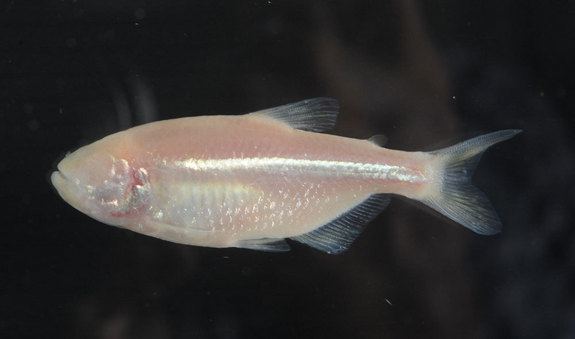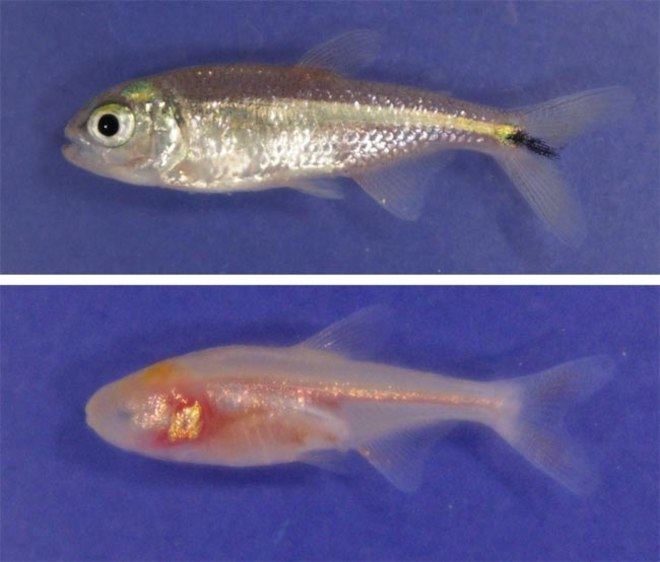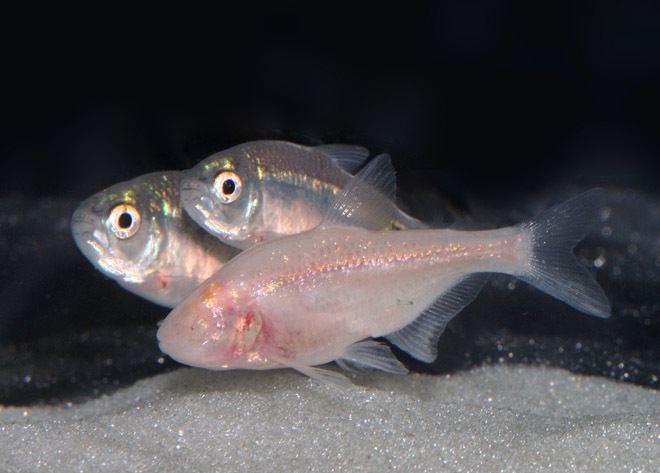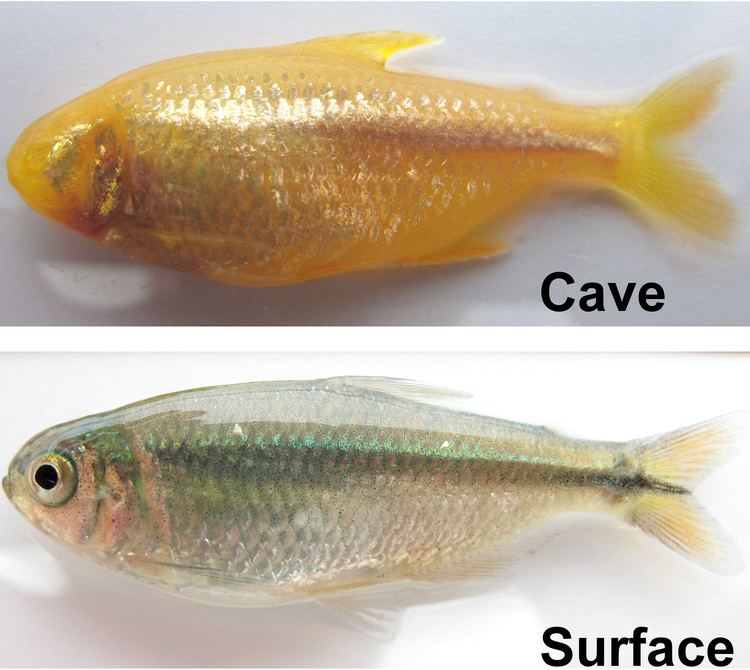 | ||
The blind cavefish hd jonathan bird s blue world
Cavefish or cave fish, also known as hypogean fish, is a generic term for freshwater fish adapted to life in caves. Being aquatic, they are a part of the troglobite group known as stygofauna. The approximately 170 species of cavefish are found in all continents, except Antarctica and Europe. Although widespread as a group, many cavefish species have very small ranges and are seriously threatened. Cavefish are members of a wide range of families and do not form a monophyletic group. Typical adaptions found in cavefish are reduced eyes and pigmentation.
Contents
- The blind cavefish hd jonathan bird s blue world
- Cryptotora thamicola a cavefish with evolutionary implications
- Adaptions
- Diversity
- Conservation
- References

Cryptotora thamicola a cavefish with evolutionary implications
Adaptions

Many aboveground fish may enter caves on occasion, but obligate cavefish (fish living strictly in caves) are extremophiles with a number of unusual adaptions known as troglomorphism. In five species, the Mexican tetra, shortfin molly, Oman garra, Aspidoras albater and Pterocryptis bucccata, both "normal" aboveground and cavefish forms exist. Living in darkness, pigmentation and eyes are useless and typically reduced in cavefish. Other examples are a loss of scales, swim bladder and behaviors such as certain types of display. The loss can be complete or only partial, for example resulting in small (but still existing) eyes. In some cases, "blind" cavefish may still be able to see; juvenile Mexican tetras of the cave form are able to sense light via certain cells in the pineal gland. In the most extreme cases, the lack of light has changed the circadian rhythm (24-hour internal body clock) of the cavefish. In the Mexican tetra of the cave form and in Phreatichthys andruzzii the circadian rhythm lasts 30 hours and 47 hours, respectively. This may help them to save energy. Without sight, other senses are used and these may be enhanced. Examples include the lateral line for sensing vibrations, chemoreception (via smell and taste buds), electroreception, and mouth suction to sense nearby obstacles (comparable to echolocation). Cavefish are quite small with few species surpassing 15 cm (6 in) in length. At up to 40 cm (16 in), the blind cave eel is the longest known cavefish.
Some deep sea and deep river fish have adaptions similar to the cavefish, including reduced eyes and pigmentation.
Diversity

Although the approximately 170 obligate cavefish species are found in most continents, there are strong geographic patterns and the species richness varies. Cavefish are strongly linked to regions with karst, which commonly result in underground sinkholes and subterranean rivers. With almost 100 species, by far the greatest diversity is in Asia, followed by more than 30 species in South America and 25 species in North America. In contrast, only 9 species are known from Africa and 5 from Oceania. Europe has stygofauna (most famously the olm, a cave salamander), but it does not have any cavefish. On a country level, China has the greatest diversity (more than 50 species), followed by Brazil (20–25 species), India (11 species), Mexico (11 species), United States of America (10 species) and Thailand (9 species). No other country has more than 4 cavefish species. Being underground, many places where cavefish may live have not been thoroughly surveyed. New cavefish species are described with some regularity and undescribed species are known.

Obligate cavefish are known from a wide range of families: Characidae (characids), Balitoridae (hillstream loaches), Cobitidae (true loaches), Cyprinidae (carps and allies), Nemacheilidae (stone loaches), Astroblepidae (naked sucker-mouth catfishes), Callichthyidae (armored catfishes), Clariidae (airbreathing catfishes), Heptapteridae (heptapterid catfishes), Ictaluridae (ictalurid catfishes), Loricariidae (loricariid catfishes), Trichomycteridae (pencil catfishes), Sternopygidae (glass knifefishes), Amblyopsidae (U.S. cavefishes), Bythitidae (brotulas), Poeciliidae (live-bearers), Synbranchidae (swamp eels), Cottidae (true sculpins), Eleotridae (sleeper gobies) and Gobiidae (gobies). Many of these families are only very distantly related (they do not form a monophyletic group), showing that adaptions to a life in caves has happened numerous times among fish. As such, the descriptive term "cavefish" is an example of folk taxonomy rather than scientific taxonomy. Strictly speaking some Cyprinodontidae (pupfish) are also known from sinkhole caves, famously including the Devils Hole pupfish, but these lack the adaptions (e.g., reduced eyes and pigmentation) typically associated with cavefish.
Conservation

Although cavefish as a group are found throughout large parts of the world, many cavefish species have tiny ranges (often restricted to a single cave or cave system) and are seriously threatened. For example, the Alabama cavefish is only found in the Key Cave and the entire population has been estimated at less than 100 individuals. The Brazilian blind characid was only known from a single specimen caught in 1962 until rediscovered in 2010. The main threats to cavefish are typically changes in the water level (mainly through water extraction or drought), habitat degradation and pollution, but in some cases introduced species and collection for the aquarium trade also present a threat. Caves in some parts of the world have been protected, which can safeguard the cavefish. In a few cases such as the Oman garra zoos have initiated breeding programs as a safeguard. In contrast to the rarer species, the cave form of the Mexican tetra is easily bred in captivity and widely available to aquarists.
